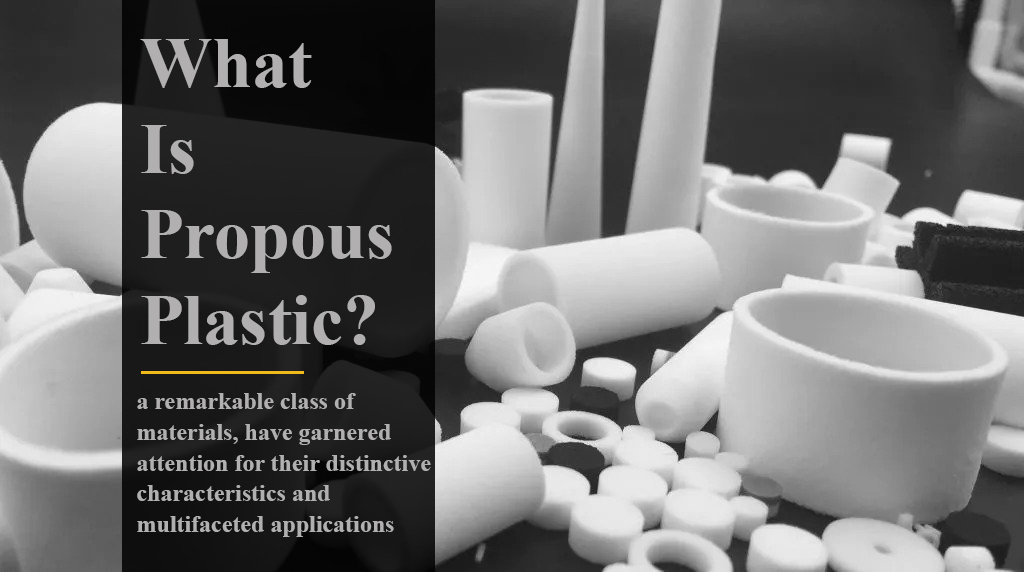Introduction
Porous plastic, a remarkable class of materials, have garnered attention for their distinctive characteristics and multifaceted applications. Engineered with a porous structure comprising interconnected voids, these materials possess properties that render them invaluable across diverse industries.
Characteristics and Structure
1. Porosity:
At the core of porous plastics lies their porosity, denoting the volume percentage of void spaces within the material. This attribute gives rise to an expansive surface area, facilitating interactions with gases, liquids, and particles. The tailored porosity allows customization to suit specific application requirements.
2. Pores:
Porous plastics boast a complex pore structure that influences their performance:
– Pore Size: The dimensions of the pores significantly impact material functionality. Pore size dictates the substances that can permeate the material, enabling selectivity in applications such as filtration and adsorption.
– Pore Distribution: The arrangement of pores affects uniformity in fluid flow and interactions. Control over pore distribution allows optimization for desired performance outcomes.
– Pore Structure: The way pores interconnect and their geometrical arrangement contribute to the material’s behavior. A well-engineered pore structure enhances transport phenomena within the material.

Performance Parameters
1. Air Flow and Water Flow:
Porous plastics exhibit variable air and water flow rates determined by their pore structure. Pore size and distribution influence the ease of fluid movement through the material. These characteristics make porous plastics ideal for filtration, ventilation, and water treatment systems.
2. Pressure Drop:
When fluids traverse porous materials, a pressure drop occurs due to flow resistance. The intricate network of pores within porous plastics dictates this phenomenon. Understanding and controlling pressure drop aids in designing efficient fluid transport systems.
3. Liquid Entry Pressure (LEP):
LEP, a critical parameter for porous materials, signifies the minimum pressure required for a liquid to infiltrate the porous structure. Pore size and porosity influence LEP, which has implications in applications where liquid ingress needs to be controlled.
Applications
1. Filtration and Separation:
Porous plastics are at the forefront of filtration and separation technologies. Their tailored porosity and pore size make them versatile for tasks ranging from air and water purification to particle separation in various industries.
2. Biomedical and Healthcare:
In the medical field, porous plastics find use in wound dressings, tissue engineering scaffolds, and drug delivery systems. The intricate pore structure facilitates nutrient exchange and cell growth, contributing to regenerative medicine.
3. Industrial Processes:
Industries employing catalytic processes benefit from porous plastics as catalyst supports. The high surface area enhances catalytic efficiency, impacting fields like petrochemicals and chemical synthesis.

4. Insulation and Acoustics:
The interconnected pores of porous plastics lend themselves to excellent thermal insulation and sound absorption properties. These characteristics are harnessed in architectural insulation, automotive acoustics, and noise reduction applications.
5. Electronics and Sensors:
Porous plastics serve as substrates for sensor technologies, enabling gas sensors, humidity sensors, and other detection systems. The porous structure accommodates sensing materials, enhancing sensor accuracy.
6. Packaging and Lightweight Structures:
Porous plastics find use in packaging materials that prioritize protection while minimizing weight. Additionally, they contribute to lightweight structural components in industries such as aerospace and automotive.
The manufacturing technology behind porous plastics involves precise control of sintering, phase separation, and foaming processes. Advanced techniques allow tailoring of porosity, pore size, and distribution, enabling custom materials for specific applications.
Conclusion
Porous plastics epitomize the fusion of innovation and material science. Their intricate structure, porous characteristics, and diverse applications underscore their significance across industries. As technology continues to evolve, porous plastics remain poised to reshape the landscape of material engineering, offering solutions that bridge the gap between science and application.
